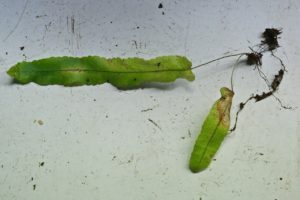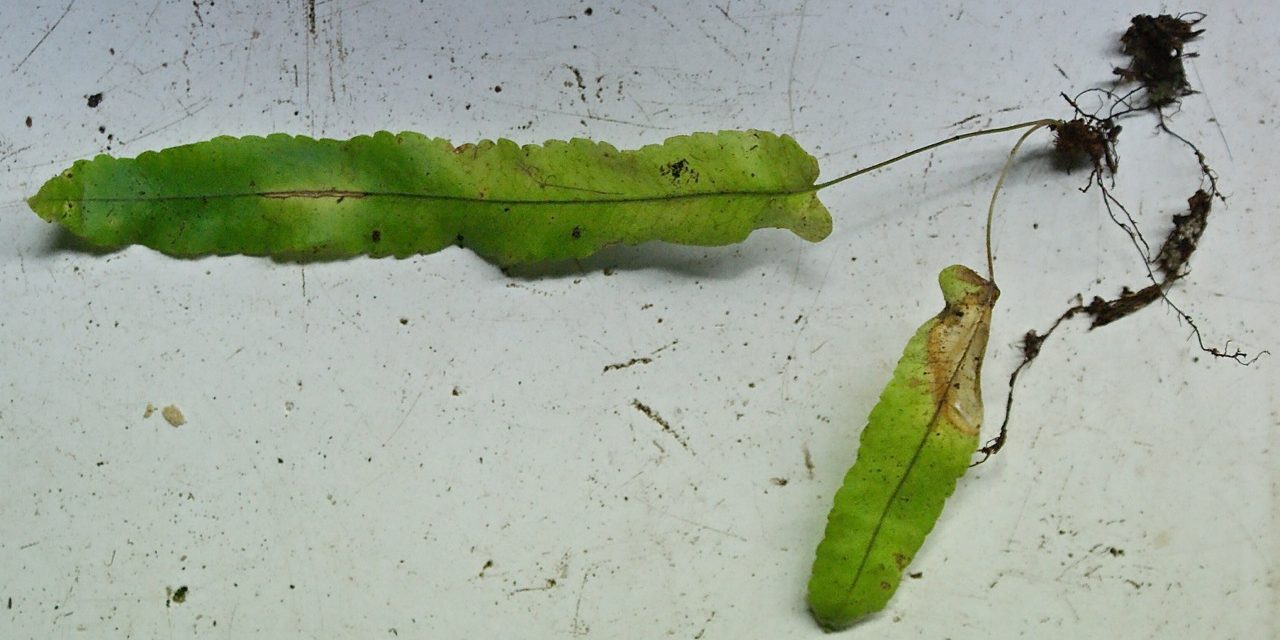
SONY DSC
I am having trouble identifying this fern that I found growing as an epiphyte on a fallen palm tree on a friends’ property near Cape Tribulation in the north of Queensland.
Any help would be much appreciated
Andy


SONY DSC
I am having trouble identifying this fern that I found growing as an epiphyte on a fallen palm tree on a friends’ property near Cape Tribulation in the north of Queensland.
Any help would be much appreciated
Andy
Thanks for posting Andy. Could it be a juvenile form? That could by why its giving you trouble. If there are no reproductive parts, try going back and hunting for larger and more developed plants.
Thanks for such a quick reply Michael. Indeed, the fern could be and probably is a juvenile form (the longest frond in the photo is 17cm long and 2cm wide) and with just 2 fronds I am guessing it is but a youngster. At the time of discovery it should have been the start of the rainy season but the rains were late and everywhere was very dry, with this fern extremely shrivelled and parched, but hanging in there none-the-less. It was growing almost at sea level on the edge of a coastal rainforest that bordered a mangrove swamp. I searched and searched the local area for other specimens but none were found. Unfortunately I am now 9500 miles away, back home in the UK.
The one plant it does remind me of is an Oleandra sp. Of which a single species is recorded from the area, O. neriiformis. All photos I can find of this species show mature plants which look quite different to my plant.
Many thanks anyway
Andy
I dont think this is Oleandra neriformis. I have specimen plants of this species and it is not the same. The rhizome on neriformis is thicker and has aerial roots Fronds tend to be dark green and pointed.
microsorum scolopendria maybe
Not the microsorum either. Thought it may be an immature frond, but the shape at the base isnt right.
Maybe it´s Elaphoglossum…
Juvenile form of Nephrolepis biserrata
I would make a bet that thia is the juvenil form of Goniophlebium verrucosum (percussum)
Many thanks for all your replies. I’m pretty sure it isn’t an Elaphoglossum, nor a Microsorum (the fronds were hairy, with tiny bristles) but Markus, your suggestion of N. biserrata lead me to read up on the species in my copy of Australian Ferns and Fern Allies by Jones and Clemesha. Certain parts of the description fit…sometimes as an epiphyte on the trunks of palms, distribution in NE Queensland in coastal districts etc, but I wonder if it may be Nephrolepis hirsutula? This would fit with the lobed base to the pinna and the hairiness. Anyway, I also think it could be Malte’s suggest of G. verrucosum, which, according to Jones and Clemesha, is now known as Schellolepis percussa.
http://bie.ala.org.au/species/http://id.biodiversity.org.au/instance/apni/871266
Dear Andy,
I am quite sure it is G. percussum. I could send you some pictures of my plant in the greenhouse which started the same way.
Best regards, Malte
Thanks very much for that Malte. I think you are right and would love to see your photos. You can send them to my e-mail address:
nepenthescarnivorous ‘at’ yahoo.co.uk.
thanks very much
Andy
Hi Andy! (remember me from the Philippines that time – had dinner with Stewart recently and he says you are doing well). Just to clarify that the Australian herbarium now calls it Goniophlebium percussum (Cav.) W.H.Wagner & Grether. Jones is often not accepted for much of his taxonomy over here.
Hi Lachlan. Yes, of course I remember you….how could I forget?! I trust you are well? Incidentally, I had Stew over last week. Anyway, thanks for the correct id. Is there a more recent, updated book on Australian ferns?